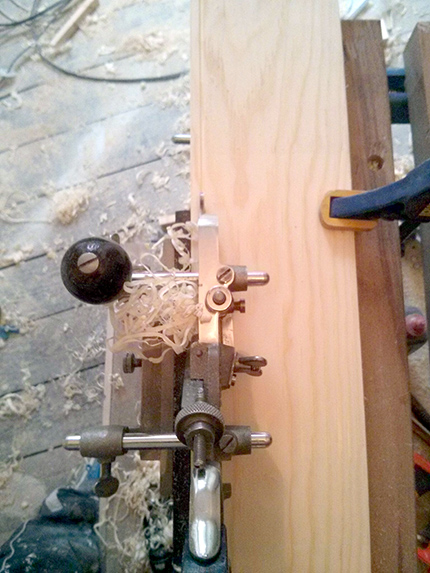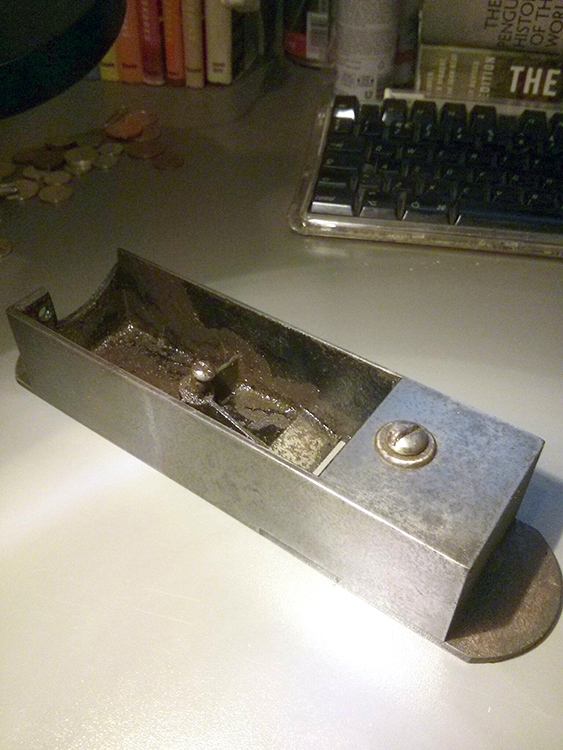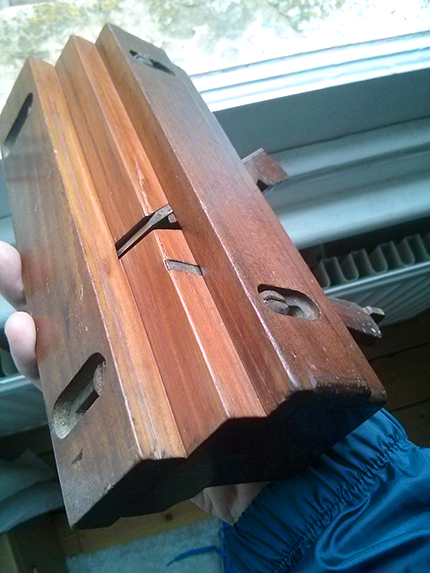I don’t bother too much with the smaller Record plough planes, as I have this Record 405 and it seems to work pretty well. I would recommend sourcing one if you are thinking of an older plough plane to use. The price generally hovers somewhere around 80-90UKP from dealers or eBay. Make sure you get all the bits, because sourcing tiny missing bolts, spurs and screws can make the process of buying one quite a bit more expensive.
I’ve been making a cabinet for my bathroom and wanted a bead running around the inside of the door frame. The stiles and rails of the cabinet will therefore have the bead and I’ll mitre the beads when I m&t the joints.
The trick with this plane, like any plough, is to concentrate more on the left hand, (pushing the fence against the stuff), rather than just thinking about the right hand.
Start with very light passes a the far end , keep it light, keep it very straight and don’t flex your shoulders too much. As you cut in strokes, move back, pushing the next cut into the previous one. Try to do this when the depth gauge has nearly bottomed out, then you can swipe through the whole groove at the end and take the final depth out. Move like someone who is frozen in their upper body. Once you start pulling back and pushing into the groove you’ve established, you can relax a little, but all the time concentrate on that fence, don’t let the grain push it away from the reference surface.
Category: Planes
Calling from the graveyard…

…yes, a Stanley No.9 Cabinet Makers plane, sans ‘hot dog’ handle for now. I’ve not yet had the chance to empty all these more boxes to confirm it’s gone awol for sure. The pics I have so far don’t fill me with promise, but I’ve worked miracles on planes not far off this condition. If it’s rusted through on the bottom though, I’ll be gutted.
Update: Bad News. Halfway through cleaning the plane up, I noticed the back corner was coming loose as there seemed to be a fracture. Sure enough, the rear corner of the plane came away. No idea what I should do with this now. I think it would be possible to weld/braze, but beyond my skills. If anyone out there wants to make an offer on a fixer-upper, let me know, otherwise it might go on eBay.
PS, check out Colin Sullivan’s post about making his own.

The wonderful Høvelbenk blog is rapidly becoming a favourite of mine. Having recently found a Stanley No.20 circular plane, I’m keen to see a few in action and learn a bit more about what it can do. The latest post on Høvelbenk seems to be concerned with the restoration of a curved moulded arch over a historic door. The blog is Swedish, and I dearly wish I could read it in English, but the pictures are, as ever, nicely shot and edited. One very interesting shot shows planes which the writers seem to make (!), as part of the project. Wonderful stuff. I really hope this post makes it into their English category.
Some new stock

I’ve been pretty busy here with house purchases, holidays and the day job, but slowly getting back to tool-pickups and selling. I’ve had some interesting tools coming through the doors just recently, so will be posting a few as I get them cleaned up. My web guy continues to employ the undercover skills of a special agent, so for the time being the completion of my sales page on the website remains a dream.
The first nice plane this week is a lovely skewed rebate with two depth stops, made by the French firm, ‘Aux Mines de Suede‘. It has nice sharp irons, one of which is a nicker held in by a supplementary small wedge. The wood used by this firm for their planes is a very dense, heavy wood, which keep an excellent profile. I believe it’s Cormier wood? I’d also call this a badger plane if it had a rear handle and no depth stop, but not sure whether that applies to this configuration. As ever, I welcome your input, dear readers.









